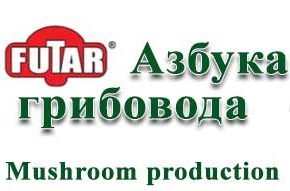Why there are no mushrooms on a well-colonized substrate block?
If problems with mycelium block arise on the colonization stage: uncolonized spots, green mold or brown water on the bottom of the bag, the cultivator realizes why such a block can give poor harvest or no yield at all.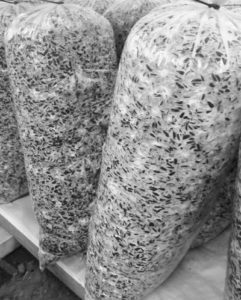
But if the overgrowth was very good – the bag is without any spots, all mycelium is white, then why there aren’t any primordia or mushrooms?
There are two reasons for this phenomenon: defective mycelium or inappropriate incubation and microclimate conditions in the growing chamber. Let’s take a closer look at these issues.
Mycelium.
Serious laboratories keep track of the constant updating of stock cultures and sell well-formed dikaryotic mycelium ready for fruiting bodies production. If you prepare mycelia at home or buy from a manufacturer, which is often a propagated stock culture or consumer mycelium, it can degenerate or lose the ability to form mushrooms. This mycelium grows well, forming the only the vegetative mycelium, but the fruiting bodies, which are the reproductive organs, are not produced anymore.
What to do in this case?
There are no tricks how to make such a batch fruit. They all simply don’t work because such mycelium simply has no reproductive ability. Therefore, it is necessary to buy the mycelium from reliable manufacturers, to be sure of its quality. To know how to choose quality mycelium see here.
incubation conditions.
In our article “microclimate regimes in the incubation chamber” temperature and humidity incubation parameters are described in much detail. Any deviations from these parameters can lead to fruiting inhibition even in a well-overgrown mushroom block.
- The humidity control disturbance.
The pins or primordia are formed with a minimum humidity of 78%. At lower humidity levels (70%), they can start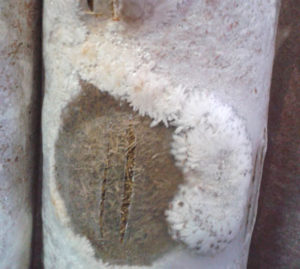
forming, but later they wither and dry out.
If the humidity in the incubator is under 70% at the stage of block whitening, the slots begin to dry, forming a dry “plug” just in 3-4 days. Mycelium growing close to this area starts to dry out and die. In the plug itself, drying substrate causes microcracks and through these crack moisture starts to escape the bag, disrupting gas and water exchange in the block. All this signals the mycelium of adverse conditions both outside and inside the block, and therefore reproductive organs (fruiting bodies of oyster mushrooms) are not formed.
If the substrate initially had high humidity level (70-72%) after heat treatment, mushroom pins can be formed under the film, not in the perforated areas (they are quite dry), but in the areas where the film has air pockets.
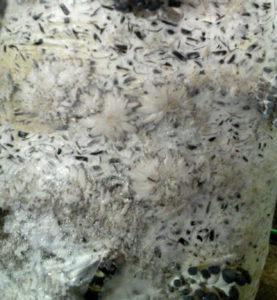
What to do in this case?
– If this has already happened, you need to gradually raise the humidity in the incubator but no more than by 4-5% per day until it reaches 85-87%. Wait for the perforations to become moist and then move bags to the growing chamber.
– To prevent such situation in future you need to keep the appropriate high humidity level in the incubator according to substrate blocks’ stage of development.
2.The temperature level disturbance.
-
If you’ve never measured the temperature T1 , T2 , T3 , as it is described in the article, in case if there are no primordia on a well overgrown twenty-days-old blocks – please measure all three values!
Air temperature (T 1 ) has to be measured close to the block, the thermometer or sensor can be positioned directly on the bag. Desirably, the thermometer should have measuring sensitivity of 0.1 degrees.
Center block temperature (T 3 ) should be measured with a thermometer or sensor with a long probe (not less than 12 cm).
After measuring the temperature it is necessary to solve the following problem:
- Find the direct average (CA) of temperatures T 1 and T 3 :
CA = (T 1 + T 3 ) / 2
- Compare this number with T 2
- If the “under-the-surface” temperature T2 is above the СА indicator, then the pins will not form.
Example:
T 1 = C 23,4
T 2 = C 26,0
T 3 = C 27,6
CA = (23.4 + 27.6) / 2 = 25.5
As seen from the Example – T 2 is greater than CA.
What to do in this case?
In order to promote primordia formation, we need to lower the temperature in the incubation chamber by no more than 1.5-2 degrees every day.
Most importantly – do not wait for primordia to form on their own. The sooner you measure all three temperatures in order to find out the reason, the sooner you will be able to bring this batch to fruiting and ensure a proper yield.
Because if you find out on the 30th day that the reason was temperature regime – the probability to save them will be much lower, and even if you succeed, the yield will very low.
Microclimate in the growing chamber.
If you transfer bags from the incubation chamber to the growing chamber where the temperature is 4-5 degrees higher, under the plastic cover of those bags there can be a layer of slimy substance, which peels off from the substrate as a fluffy pulp. It is a vegetative mycelium formed to protect inner mycelium from overheating. Moreover, such layer is formed on the most qualitative and active mycelium, because it has the ability to survive the adverse conditions.
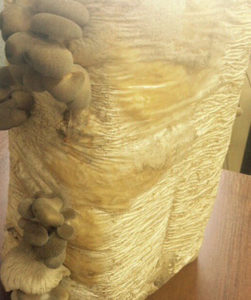
What to do in this case?
- You need to understand that in order to work at high temperatures, you need to create a climate favorable for fungi development, not only in the incubator, but also in the growing chamber. Temperature should be lower by at least 2-3 degrees than in the incubator. If the chamber cooling is not economically profitable, then after the mass appearance of primordia, the temperature may be gradually raised.
- But in this case you need to make sure if the ventilation system can sustain this load and support the humidity regime, otherwise fungi can become too light and/or deformed.
- In case this has already happened, you can try to save the crop, making new cuts, slightly cutting through a layer of vegetative mycelium. But you cannot rely too much on this method, especially if the blocks have not yet released the first flush.
So, the bags of oyster mushroom mycelium can be well-colonized, looking white, but fungi do not appear because of irregularities in the growing technology. Therefore it is necessary to strictly adhere to all the recommendations of the microclimate.
